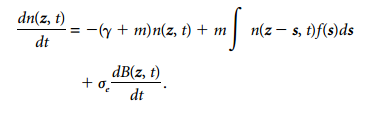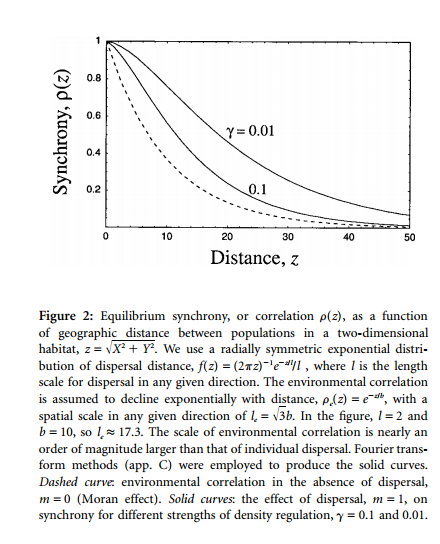Spatial Scale of Population Synchrony: Environmental Correlation versus Dispersal and Density Regulation
Background:
This paper seeks to understand mechanisms that drive synchrony in spatial populations between sites, where synchrony can be defined as the correlation between temporal population fluctuations between sites. Typically, synchrony is believed to decrease with increasing distance between populations with individual dispersal and environmental conditions influencing the scale at which populations become asynchronous. The majority of literature demonstrating the influences of dispersal and environment on population synchrony consists on insight from simulated models, and little work has been put forth that provides analytical insight. In this paper, researchers present a linear model exploring small fluctuations between populations.
The Model:
Model Assumptions:
- Habitat is infinite & exists with geographic coordinates X and Y
- Expected population dynamics are spatially homogenous
- Local population sizes are assumed to be large enough to neglect demographic stochasticity.
- Dispersal is isotropic with no barriers.
The linearized model for population growth takes the form:

This model can be translated as the current population size at location Z, time T. Gamma represents the strength of density regulation, while M in the first term represents the emigration from location Z. The second term is the immigration rate to location Z. The last time represents stochastic perturbations at location Z, with sigma representing the standard deviation of the effect of the perturbation on population n.
Take Away:
This paper provides a simple expression for population synchrony regulated by local dispersal and environmental conditions. It accomplishes this by relating spatial scale of synchrony to scale of individual dispersal, the scale of environmental correlation, to the strength of population density regulation.
Key Figures:


